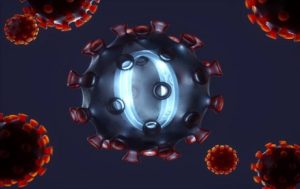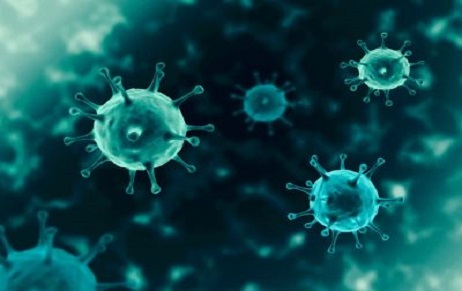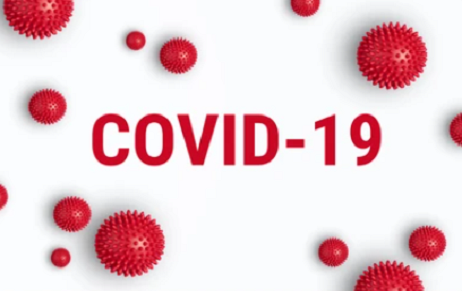COVID-19 & DIGITALISATION IMPEDIMENTS The technology is oft-mentioned as a boon and the Covid-19 has…
IP Regime With Respect To Access To Health Care In Public Health Emergencies
Lives have moved ahead a million squares in the time span of a few decades. Advancement of Science and Technology has revealed a new essence to the world. However, even though progress in all spheres has greatly improved the quality of human life, certain ancillary outcomes have been highly undesirable. In a rat race of establishing a set system of governance for every probable issue, the question as to who actually is the beneficiary has been greatly neglected. One of the most prominent examples of such a dichotomy is the grant of patents for pharmaceuticals and the Right to access Healthcare. The issue has further gained more prominence especially with the emergence of COVID 19 as a heath pandemic. The very obvious questions which needs consideration here relates to the fact that COVID has claimed more than over 2 million lives globally with only a handful of countries being able to successfully manufacture a efficient and effective vaccine. So, the dichotomy is very evident in terms of whether the patent protection is to prevail over the right to access public health.
[Picture Credit: gettyimage]

Under the present circumstances, patent can be considered as the most used as well as abused Intellectual property. On the one hand patents can be considered a reward or an incentive for the creativity and hard work and work as a motivation for the companies to invest more in R&D but on the other hand it might also lead to an abuse by the patent holder in the sense that at times it may lead to monopolistic tendencies. When a company gets a patent over a drug it in a way gets the authority to regulate the price of that particular drug. So, if the price of any drug is kept very high only a few people would be in a position to afford that particular drug.
Our constitution guarantees right to health as fundamental right under Article 21. Hence, a balance is to be drawn between such fundamental right and such pharmaceutical patent so that there is no conflict of interest between any of the stakeholders involved.
The Apex Court in the case of All India drug action network v. Union of India Ministry of Health has also held that the government should take steps to ensure timely access to lifesaving drugs for its citizens. As a corollary to the above mentioned propositions, the Ayyaangar committee report on patents also bought forth the observation that there is a high risk factor involved when it comes to granting of patents in a country like India. The patents confer monopolistic rights which in a way are against the interest of majority of population which is poor. This will be against the notion of access to medicines. The report also stated that any policy which has character of granting monopoly right is violative of preamble and also the Article 21 of our constitution.
TRIPS
When the Trade related aspects of Intellectual Property Rights (TRIPS) Agreement came into force it worked as an encouragement for the private players in the market but the situation was significantly different prior to emergence of the TRIPS agreement. It is pertinent to note here that the patents Act, 1970 only granted patent on the process and not on the product because of which there was a rapid growth in the development of generic drugs at that point of time. So, the domestic players could very conveniently reproduce and market the new drugs because all that they had to do was to merely change the process of production. With this trend, the pharmaceutical industry could manage to cater to the needs of the lower strata of the society by producing lifesaving and essential drugs at a fairly lower cost.
Thus, we see that the pre TRIPS era of granting patents, specifically, was comparatively less stringent and was also helpful in regulating monopolistic activities by setting the price in a way so as to be within the reach of the poorer strata of the society as well.
COMPULSORY LICENSING
Compulsory Licensing is a procedure through which, any company, agency or person can use
or manufacture a patented product without taking the consent from the patent-holder. Under the International regime, a country with “insufficient capabilities” can make use of compulsory licensing in order to copy the formula developed by other countries to produce the medicines locally. Such an authorisation is given by the Controller general under the Indian Regime. Compulsory licensing not only finds a mention under the TRIPS Agreement but also under the Indian Patents Act, 1970. Additionally, there is a prescribed time frame of three years before which a private entity cannot apply for compulsory licensing. However, a national emergency falls as an exemption to this stated statutory prescription and the government has special powers to bypass such a time stipulation. Sec 84 of the Act requires certain conditions to be met before a compulsory license can be granted:
- Public requirements associated with the patented product must not be satisfied;
- The price of the invention must not be affordable;
- The invention is not worked in the territory of India.
A textbook example of the use of Compulsory License has been for the domestic production of COVID 19 vaccines by the under developed and the developing countries. There being an acute shortage of vaccines and the lives of millions of people at stake, Compulsory Licensing has come at rescue for many countries.
The bid to balance the need of Pharmaceutical MNCs to have well protected product patents and the needs of India’s healthcare system which caters to a diverse population comprising majorly of the below poverty line section, has been a constant struggle. Up until 2005, the laws in India were lenient and allowed for copycat products, which helped in flourishing India’s Pharmaceutical industry. However, to keep pace with the changing society, the laws also need to change accordingly. This is precisely why India introduced Amendments if its Patent Act in 2005 to keep pace with the changes brought in by the TRIPS Agreement.
When we talk specifically about the COVID 19 crisis, vaccine diplomacy and vaccine nationalism are the most important concerns. Under such a backdrop, the importance of international collaboration needs to be understood. The global capacity for producing vaccines is around 3.5 billion while 10 billion is the required minimum thresh hold.
In the wake of such emergency India and eight other countries have proposed to exempt vaccines from patents and other forms of IPR.
The patents of various pharmaceutical companies act as an impediment to the amplification and production of vaccines. It is pertinent to note that Moderna alone has 12 patents on their mRNA vaccine. The world health organization does not have the authority to sidestep patents
but it is trying to bring countries together to find a way to bolster vaccine supplies. While the larger view has been that patent protection for vaccines can have an adverse impact on the under developed and developing countries since they neither have the resources nor the know how to be self-sufficient, arguments have also been made that “eliminating those protections would undermine the global response to the pandemic including ongoing efforts to tackle new variants and would ultimately undermine public confidence towards vaccine safety and create a barrier to information sharing. Thus, most importantly, eliminating protections would not speed up the production process anyways.”
There have also been cases wherein technology transfer based on voluntary license have been successfully granted. For instance, between AstraZeneca, Oxford and Serum Institute of India.
The robust regime of IPR in India in such cases should be effectively engaged and efficiently used as a tool to mitigate the disparity between private and public interest. In India, an essential prerequisite for the grant of patent is the royalty free use of a patented invention by the Central Government. In this regard, Section 92 of the Patents Act authorizes the Central Government to issue compulsory license at any time after the grant of Patent in case of a national emergency or extreme urgency. It is pertinent to note that the Coronavirus outbreak, under all circumstances, qualifies as a Public Health Emergency of International Concern and thus can be seen as a matter of national emergency or extreme urgency. Section 102 of the Patents Act further gives the Central Government the power to acquire a patent from the patentee or the applicant if there is a national emergency. In this regard, adequate compensation shall be paid to the Patentee.
Thus, we see that while compulsory licensing may not be the most ideal way to deal with the current situation, it is definitely beneficial for breaking the patent impasse.
Conclusion:
The battle between the conflicting interests of developed and developing countries may continue for long as the complexities associated with the development of patent laws can take up uncountable suggestions, amendments and volumes.
Developing countries are often stuck between the obligation to comply with the global agreements and the duty to provide accessible healthcare to its citizens. India has covered a hue distance backwards where in Pre-TRIPS era, it had less stringent laws and allowed legal re-production of patented medicines as compared to the Post-TRIPS era, where it had to comply with TRIPS and subsequently had to illegalize this reverse engineering. However, needless to say, despite this India has maintained sufficient leniency in upholding the right to health, as is evident from the current pandemic situation.
Here, what needs to be fathomed is that undeniably monetary interest of many big companies comes to stake when the price of a lifesaving drug is regulated but innovation and patents are the two different sides of the same coin. This coin needs to be flipped keeping in mind public health because ultimately innovations in pharmaceutical industry are meant to save lives.
Author: Mahak Agrawal – a student of Symbiosis Law School (Nagpur), in case of any queries please contact/write back to us via email [email protected] or at IIPRD.



